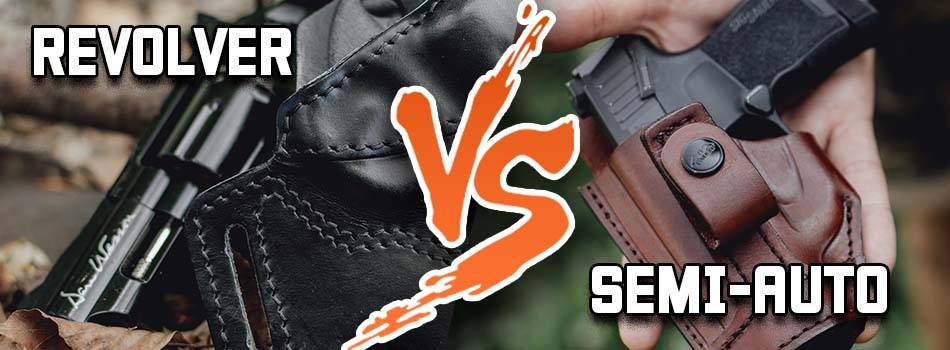
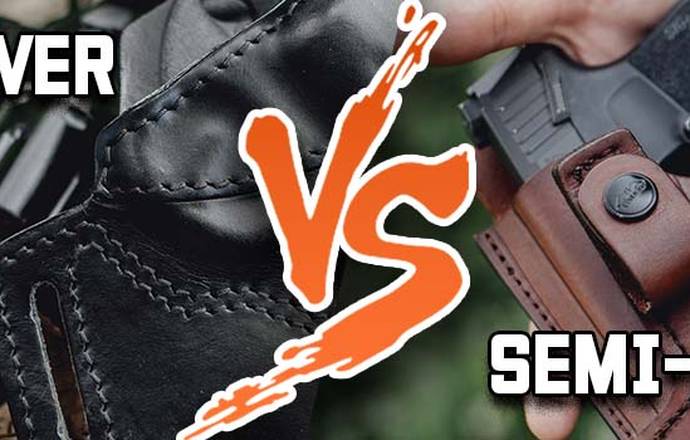
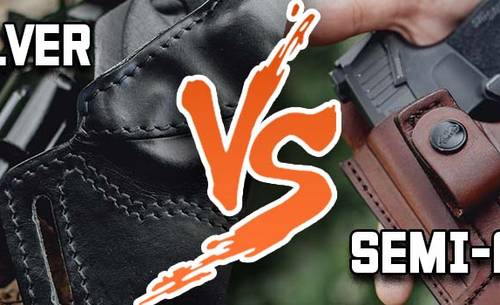
Table of Contents
If you’re having an internal debate between a carrying a revolver vs semi-automatic pistol—that’s more than just a matter of personal preference. It's precisely a decision that could potentially impact one's effectiveness in a self-defense scenario.
SEMI-AUTO VS REVOLVER
Each firearm type boasts its unique set of characteristics, advantages, and drawbacks. True, most of the choice ultimately hinges on the individual's specific needs, comfort level, and the situations they anticipate encountering.
But what we want to do here is explore the distinctions between revolvers vs semi-automatic pistols, guiding you toward making the most informed decision for your self-defense needs.
REVOLVER VS. SEMI-AUTO: THE BASICS
REVOLVERS
Revolvers, with their storied history, are the quintessence of reliability and simplicity in design.
Characterized by a revolving cylinder holding a number of rounds, typically five or six, they operate in either:
- Single action (SA), where the hammer must be manually cocked before each shot
- Double action (DA), where pulling the trigger both cocks and releases the hammer
This design, while mechanically complex inside, presents a user interface of elegant simplicity.
SEMI-AUTO
Semi-Automatic Pistols, often referred to as semi-autos or autoloaders, represent a more modern evolution in firearm technology.
- These pistols store rounds in a detachable magazine inserted into the grip
- Upon firing, the slide cycles back automatically, ejecting the spent casing and chambering a new round from the magazine
This operation allows for quicker reloading and a higher capacity of ammunition, making semi-autos a popular choice among law enforcement and civilian carriers alike.
REVOLVER VS. SEMI-AUTO: REVOLVERS EXPLAINED
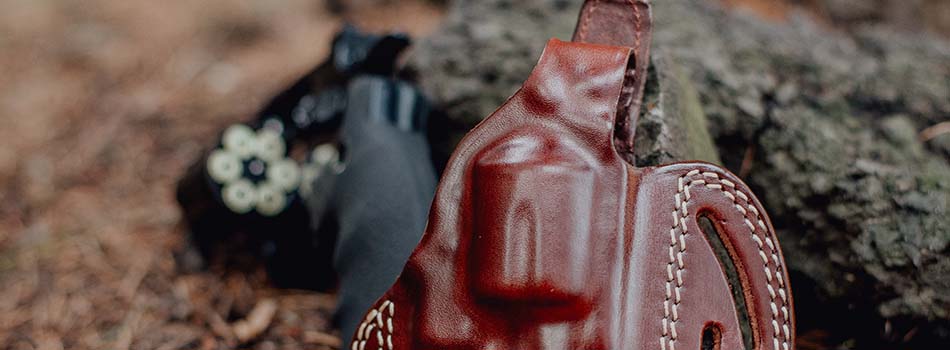


At the heart of a revolver's operation are its cylinder and the hammer mechanism. In single action revolvers, the hammer must be manually pulled back for each shot, which rotates the cylinder and aligns a new round with the barrel.
Double action revolvers offer the added functionality of pulling the trigger to both cock and release the hammer, albeit with a heavier pull compared to SA.
ADVANTAGES
- Revolvers are renowned for their robustness and simplicity
- They are less likely to jam or malfunction, thanks to fewer moving parts exposed to external factors
- Their straightforward operation makes them appealing to those who value reliability and ease of use over capacity and quick reload times
DISADVANTAGES
- The main drawbacks of revolvers are their limited ammunition capacity and slower reload times
- In a high-stress situation, the time it takes to manually reload can be a critical disadvantage
- The typically heavier trigger pull of a DA revolver may affect shot accuracy for less experienced shooters
REVOLVER VS. SEMI-AUTO: SEMI-AUTOMATIC UNPACKED
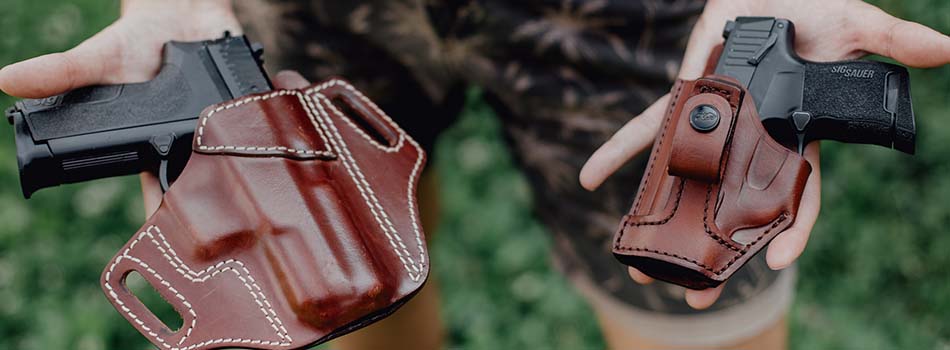


Semi-automatic pistols leverage the energy from firing a round to automatically eject the spent casing and chamber the next round.
This process is facilitated by the magazine, which can hold a significantly higher number of rounds than a revolver's cylinder. The ability to quickly replace an empty magazine with a full one offers a distinct advantage in prolonged engagements.
PROS
- The primary benefit of semi-automatic pistols lies in their ammunition capacity and the speed with which they can be reloaded
- The consistent trigger pull of most semi-autos can contribute to improved accuracy after the initial shot
- Modern semi-autos also feature various built-in safety mechanisms and ergonomic designs that enhance user comfort and shooting precision
CONS
- While generally reliable, semi-autos are more susceptible to malfunctions due to dirt, lint, or improper maintenance, particularly in models with tighter tolerances
- The complexity of their operation compared to revolvers may also present a steeper learning curve for new shooters
REVOLVER VS. SEMI-AUTO: COMPARATIVE ANALYSIS
The debate between revolvers and semi-automatic pistols extends into their reliability, maintenance, and usability. Common myths often dictate opinions, but realities are more nuanced.
RELIABILITY
Revolvers are lauded for their "simple reliability," with fewer moving parts and less susceptibility to ammunition type variations.
Semi-autos, however, have evolved significantly, with modern designs offering comparable reliability to revolvers, even in adverse conditions.
The myth that revolvers are inherently more reliable doesn't hold as strongly against today's semi-autos, which have been engineered for resilience and consistent performance.
MAINTENANCE
Revolvers, with their intricate internal mechanisms, can actually be more complex to maintain than semi-autos. Semi-automatic pistols are generally easier to disassemble and clean, even for those with minimal firearms maintenance experience.
The perception that semi-autos are more maintenance-intensive stems from their susceptibility to fouling affecting performance, but regular cleaning mitigates this issue effectively.
USABILITY
Semi-autos offer a faster reload time and higher ammunition capacity—crucial advantages in self-defense situations where seconds and shots matter.
Revolvers, with their limited capacity and slower reload times, require more precision in shot placement and reloading under stress, which can be a disadvantage for less experienced shooters.
REVOLVER VS. SEMI-AUTO: FACTORS TO CONSIDER
Choosing between a revolver and a semi-auto is a personal decision influenced by several factors:
Personal Comfort and Handling: The grip, weight, and balance of the firearm should feel comfortable in your hand. This comfort directly impacts your ability to shoot accurately under stress.
Capacity and Reload Speed: Consider how much capacity you feel you need and how quickly you can reload. Semi-autos typically offer higher capacity and quicker reloads with practice.
Expected Use: For home defense, a higher-capacity semi-auto might be preferable. For concealed carry, the decision might hinge on which firearm you can carry more comfortably and discreetly.
Maintenance and Reliability: Evaluate whether you're willing to commit to the regular maintenance needed for a semi-auto to ensure reliability or if you'd prefer the simplicity but potentially more complex maintenance of a revolver.
REVOLVER VS. SEMI-AUTO: MODERN TRENDS AND PREFERENCES
Modern trends in concealed carry show a marked preference for semi-automatic pistols, driven largely by advancements in reliability, capacity, ease of use, and holster technology (like the SIG P226 SOB, or the Beretta 92 IBW).
Technological innovations have made semi-autos more reliable and easier to operate, leading to their increased popularity for self-defense.
The wide variety of sizes and models available allows for tailored choices to fit individual needs, lifestyles, and comfort levels, further cementing their status as the preferred option for many.
REVOLVER VS. SEMI-AUTO: THE BOTTOM LINE
When choosing between a revolver and a semi-auto for self-defense, the best firearm is the one that you can handle comfortably, shoot accurately, and carry consistently.
- Both types have their merits and drawbacks, and the decision should be based on personal preference, comfort, and proficiency
- Engaging in hands-on testing and training with both types will provide valuable insights into which firearm best suits your self-defense needs
CRAFT HOLSTER’S COMMITMENT TO SAFETY
Your choice of handgun for self-defense is pivotal, but ensuring it's accessible when needed is equally important.
Pair your selection with a quality holster from Craft Holsters to guarantee your firearm is secure, discreet, and ready at a moment's notice.
Whether you lean towards the tradition and reliability of a revolver or the modern efficiency of a semi-auto, the right holster will complement your choice and enhance your preparedness for any situation.
DO YOU FANCY SOME MORE LIGHT READING? THEN CARRY ON WITH THESE ARTICLES
CLIP VS MAGAZINE: BREAK FREE FROM THE NOOB
STRIKER FIRED VS HAMMER FIRED: CHOOSING THE RIGHT FIREARM FOR YOU
OPEN CARRY VS CONCEALED CARRY: OPTIONS FOR SELF-DEFENSE
